#CO2 emission
Explore tagged Tumblr posts
Photo

Where will the next 1000 tons of CO2 be emitted?
122 notes
·
View notes
Text
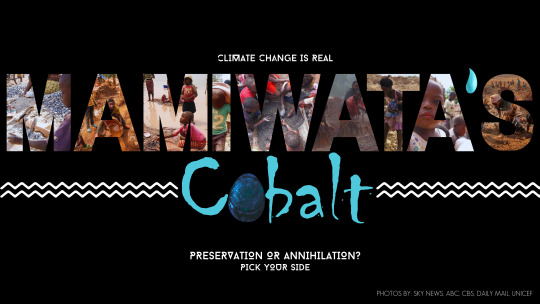
Is all fair in love and war on climate change? A supernatural force is awakened when eccentric electric car entrepreneur Alan Murdoch & two scientists travel to Congo - where their cobalt mining operations thrive on child and slave labor - to steal the mythical cobalt magnet that will help harvest an endless supply of cobalt from the ocean.
#Climateheroes#Mamiwatacobalt#Realclimateheroes#Unsungclimateheroes#Electric vehicles#Social justice#Cobalt mining#Child labor#Slave labor#Global warming#Climate change#CO2 emission#Greenhouse gas emission#Africa exploitation#Panafricanism#African diaspora
3 notes
·
View notes
Text
What is a solar tracker?
Solar Tracker?? What is it? Why do we need it? #Solarenergy #solarpanel #cleaner energy
Solar Tracker is in demand in the solar panel market. The global solar tracker market was valued at USD 7.88 billion in 2023 and is expected to grow to USD 25.24 billion by 2032. The market is projected to grow at a compound annual growth rate of 14.3 % from 2024 to 2032. With the bombardment of new technologies in every segment, solar panel industries are also finding their ways in different…
0 notes
Text
CO2 Emission Tracking Software: Features, Benefits, and Best Practices
Discover how CO2 emission tracking software helps businesses reduce their carbon footprint, save costs, and stay compliant. Learn key features and benefits
0 notes
Text

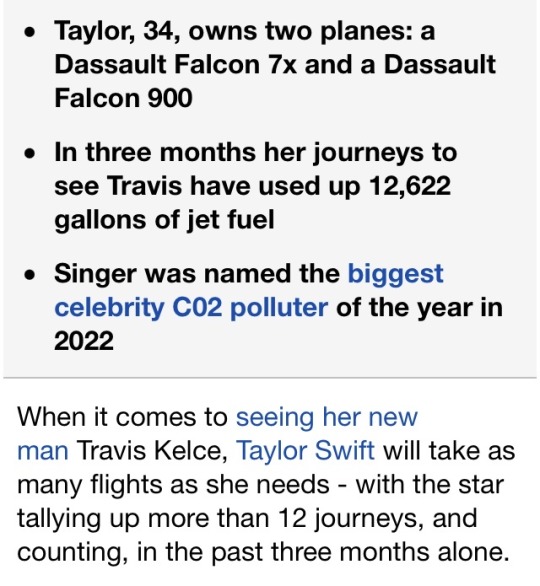



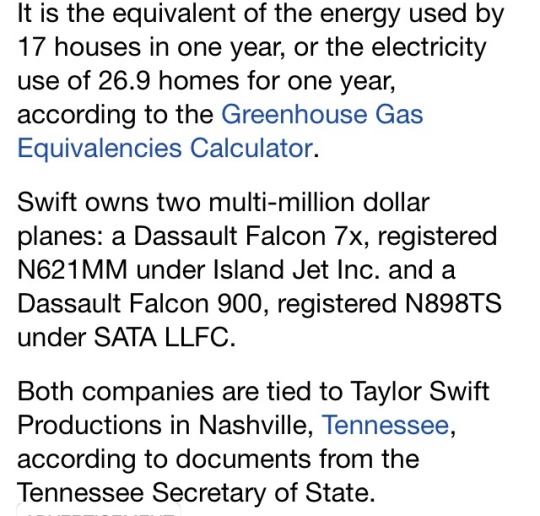



imagine being that fucking rich and that fucking careless.
#anti taylor swift#taylor swift is a climate criminal#taypollution#carbon emissions#co2#the goth punk billionaire#climate change#climate crisis
39K notes
·
View notes
Text
De zon bepaalt het klimaat op aarde, niet kooldioxide - Frontnieuws
De gevierde Israëlische astrofysicus van het establishment, Nir Shaviv, beweert dat het de zon is, en niet kooldioxide, die het klimaat van de aarde bepaalt. “De correlatie is zo duidelijk als wat,” legt de professor uit. Het interview werd gepubliceerd in de mainstream media Forbes, een bekend Amerikaans economisch tijdschrift, dat het artikel snel verwijderde […] Bron: De zon bepaalt het…

View On WordPress
#Co2#CO2 emission#CO2 hoax#CO2 tax#klimaat#klimaat alarmisme#klimaat Hoax#Klimaatverandering#Nir Shaviv
0 notes
Text
The Importance of Sustainability Reporting
How Businesses Can Create a Greener Future
In today's fast-paced world, sustainability has become more than just a buzzword; it has become a necessity for businesses to thrive. Consumers are increasingly conscious of the impact their purchases have on the environment and are demanding that companies take responsibility for their actions. Enter sustainability reporting – a way for businesses to showcase their environmental, social, and governance efforts to their stakeholders.
But what exactly is sustainability reporting? And why is it important? In this article, we will delve into the significance of sustainability reporting and how it can help businesses create a greener future.
Sustainability reporting goes beyond traditional financial reporting by providing a comprehensive view of a company's environmental and social impacts. It allows businesses to not only identify areas for improvement but also demonstrate their commitment to sustainable practices. By reporting their efforts transparently, companies can build trust and strengthen their reputation among consumers, investors, and other stakeholders.
Join us as we explore the various benefits of sustainability reporting and discover how businesses can leverage this powerful tool to drive positive change and contribute to a greener, more sustainable world. Together, let's unlock the potential for a brighter future.
What is sustainability reporting?
In today's fast-paced world, sustainability has become more than just a buzzword; it has become a necessity for businesses to thrive. Consumers are increasingly conscious of the impact their purchases have on the environment and are demanding that companies take responsibility for their actions. Enter sustainability reporting – a way for businesses to showcase their environmental, social, and governance efforts to their stakeholders.
But what exactly is sustainability reporting? And why is it important? In this article, we will delve into the significance of sustainability reporting and how it can help businesses create a greener future.
Why is sustainability reporting important for businesses?
Sustainability reporting goes beyond traditional financial reporting by providing a comprehensive view of a company's environmental and social impacts. It allows businesses to not only identify areas for improvement but also demonstrate their commitment to sustainable practices. By reporting their efforts transparently, companies can build trust and strengthen their reputation among consumers, investors, and other stakeholders.
Sustainability reporting encompasses a wide range of topics, including carbon emissions, waste management, water usage, employee well-being, community engagement, and supply chain sustainability. It involves collecting data, setting targets, implementing strategies, and measuring performance to drive continuous improvement in these areas. The ultimate goal of sustainability reporting is to create a more sustainable and equitable world for future generations.
Benefits of sustainability reporting
Sustainability reporting is important for businesses for several reasons. Firstly, it helps them identify and mitigate risks associated with environmental and social issues. By understanding their impacts and dependencies, companies can proactively address potential risks such as climate change, resource scarcity, and reputational damage.
Secondly, sustainability reporting can lead to cost savings and operational efficiencies. By measuring and managing their environmental impacts, businesses can identify opportunities for waste reduction, energy efficiency, and resource optimization. This not only benefits the environment but also improves the bottom line.
Thirdly, sustainability reporting is crucial for building trust and maintaining a positive reputation. Consumers are increasingly making purchasing decisions based on a company's sustainability practices. By transparently reporting their efforts, businesses can demonstrate their commitment to responsible practices and differentiate themselves in the market.
Key components of a sustainability report
Sustainability reporting offers numerous benefits for businesses. Firstly, it provides a platform for companies to communicate their sustainability goals, strategies, and progress to stakeholders. This transparency helps build trust and credibility, leading to stronger relationships with customers, investors, employees, and communities.
Secondly, sustainability reporting can drive innovation and business growth. By setting ambitious sustainability targets, businesses are motivated to find creative solutions to environmental and social challenges. This can result in new products, services, and business models that meet the evolving needs of customers while minimizing negative impacts.
Thirdly, sustainability reporting can enhance a company's competitiveness and attract investors. Many investors now consider environmental, social, and governance (ESG) factors when making investment decisions. By disclosing their ESG performance through sustainability reports, businesses can attract socially responsible investors and potentially lower their cost of capital.
How to create a sustainability reporting framework
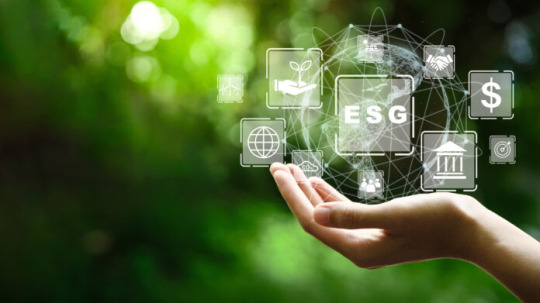
A comprehensive sustainability report typically includes several key components. These include:
1. Executive Summary: A concise overview of the company's sustainability performance, goals, and achievements.
2. Company Profile: Background information about the company, including its mission, values, and governance structure.
3. Materiality Assessment: Identification of the most significant environmental, social, and governance issues relevant to the company and its stakeholders.
4. Targets and Performance: Clear targets and progress towards sustainability goals, including key performance indicators (KPIs) and metrics.
5. Stakeholder Engagement: Description of how the company engages with its stakeholders, including customers, employees, suppliers, communities, and investors.
6. Supply Chain Management: Assessment of the sustainability performance of the company's supply chain, including supplier engagement and responsible sourcing practices.
7. Risk Management: Identification and management of environmental and social risks and opportunities that could impact the company's long-term viability.
8. Governance and Ethics: Description of the company's governance structure, ethical principles, and management of conflicts of interest.
9. External Certification and Awards: Recognition and certifications received by the company for its sustainability efforts.
Examples of successful sustainability reporting
Creating a sustainability reporting framework requires careful planning and execution. Here are some steps to guide businesses in developing an effective framework:
1. Set Goals: Define clear and measurable sustainability goals that align with the company's mission and values. These goals should be ambitious yet achievable, with specific targets and timelines.
2. Engage Stakeholders: Identify key stakeholders and engage them in the sustainability reporting process. This can include employees, customers, suppliers, investors, and communities. Their input and feedback will help ensure the report is relevant and meaningful.
3. Collect Data: Collect accurate and reliable data on the company's environmental and social impacts. This may involve conducting internal audits, surveys, and data analysis. It is important to use standardized measurement methodologies and industry best practices to ensure consistency and comparability.
4. Set KPIs: Define key performance indicators (KPIs) that will be used to track progress towards sustainability goals. These KPIs should be relevant, measurable, and aligned with industry benchmarks.
5. Report and Communicate: Prepare a comprehensive sustainability report that provides a transparent and balanced view of the company's performance. This report should be easily accessible to stakeholders through various channels, such as the company's website, annual reports, and social media.
6. Monitor and Improve: Continuously monitor performance against targets and seek opportunities for improvement. Regularly update the sustainability report to reflect progress, challenges, and new initiatives.
Tools and resources for sustainability reporting
Several companies have set the benchmark for sustainability reporting. One such example is Patagonia – an outdoor clothing and gear brand known for its commitment to environmental and social responsibility. Patagonia's sustainability report provides a holistic view of the company's efforts, including its supply chain transparency, renewable energy investments, and advocacy for environmental causes.
Another notable example is Unilever – a multinational consumer goods company. Unilever's sustainability report focuses on its Sustainable Living Plan, which aims to improve the health and well-being of people and reduce environmental impacts. The report highlights the company's progress towards achieving its goals, such as reducing greenhouse gas emissions and improving water efficiency.
These companies demonstrate that sustainability reporting is not only a responsibility but also an opportunity to drive positive change and create a greener future.
The role of businesses in creating a greener future
Fortunately, there are numerous tools and resources available to support businesses in their sustainability reporting journey. Here are a few examples:
1. Global Reporting Initiative (GRI): GRI is an international organization that provides guidelines and standards for sustainability reporting. Their framework helps companies identify and report their economic, environmental, and social impacts.
2. Carbon Disclosure Project (CDP): CDP is a global platform that enables companies to measure, disclose, manage, and share environmental information. It focuses on climate change, water security, and deforestation-related risks and opportunities.
3. Sustainability Accounting Standards Board (SASB): SASB provides industry-specific standards for disclosing financially material sustainability information. Their standards help companies identify and report on the sustainability issues most relevant to their industry.
4. United Nations Global Compact (UNGC): UNGC is a voluntary initiative that encourages businesses to adopt sustainable and socially responsible policies. It provides guidance on reporting progress towards the Sustainable Development Goals (SDGs) set by the United Nations.
These resources, along with numerous sustainability reporting software platforms and consulting services, can help businesses navigate the complexities of sustainability reporting and ensure their reports are accurate, credible, and impactful.
Challenges and barriers to sustainability reporting
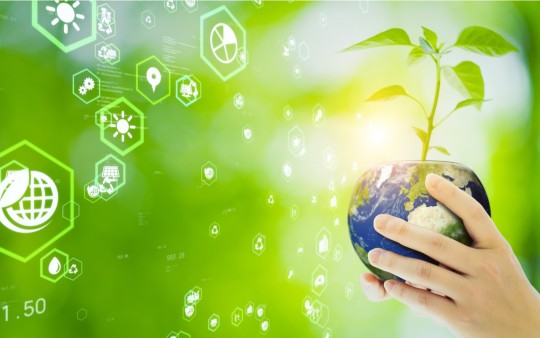
Businesses play a crucial role in creating a greener future. By adopting sustainable practices and reporting their efforts, companies can drive positive change at scale. Here are some ways businesses can contribute to a greener future:
1. Reduce Environmental Footprint: Implement strategies to reduce greenhouse gas emissions, minimize waste generation, conserve water, and protect biodiversity. This can include adopting renewable energy, implementing circular economy principles, and optimizing resource use.
2. Promote Social Equity: Ensure fair and ethical treatment of employees, suppliers, and communities. This includes providing safe working conditions, fair wages, and opportunities for professional development. Engage in philanthropic initiatives that address social challenges and support vulnerable communities.
3. Innovate for Sustainability: Continuously innovate and develop sustainable products, services, and business models. Embrace technologies and practices that reduce environmental impacts while meeting customer needs. Collaborate with industry partners, research institutions, and NGOs to drive innovation and knowledge sharing.
4. Advocate for Policy Change: Engage in policy advocacy to promote sustainability at the local, national, and international levels. Collaborate with governments, industry associations, and civil society organizations to shape policies that support sustainable development.
By taking these actions, businesses can drive the transition to a greener, more sustainable economy and contribute to a brighter future for all.
Conclusion: Taking the first step towards a sustainable future
While sustainability reporting offers numerous benefits, it also comes with challenges and barriers. Some common challenges include:
1. Data Collection and Verification: Gathering accurate and reliable data on environmental and social impacts can be time-consuming and resource-intensive. Ensuring data credibility through internal audits and external verification adds another layer of complexity.
2. Lack of Standardization: There is no universal framework for sustainability reporting, leading to inconsistency and lack of comparability between reports. Companies often struggle to choose the most appropriate reporting framework and metrics for their industry and stakeholders.
3. Limited Stakeholder Engagement: Engaging stakeholders in the sustainability reporting process can be challenging. Identifying the right stakeholders, obtaining their input, and addressing their concerns requires time, effort, and effective communication.
4. Short-Termism and Cost Concerns: Some businesses prioritize short-term financial performance over long-term sustainability goals. The perceived costs associated with sustainability initiatives and reporting can deter companies from fully embracing sustainability practices.
However, these challenges can be overcome with proper planning, commitment, and collaboration. Governments, industry associations, and civil society organizations can play a crucial role in addressing these barriers by providing guidance, harmonizing reporting frameworks, and promoting best practices.
#Net Zero emission#Carbon footprint#CO2 emission#Sustainability reporting#Carbon credit price today in India#Carbon footprint calculation 10 simple ways to reduce your carbon
1 note
·
View note
Text
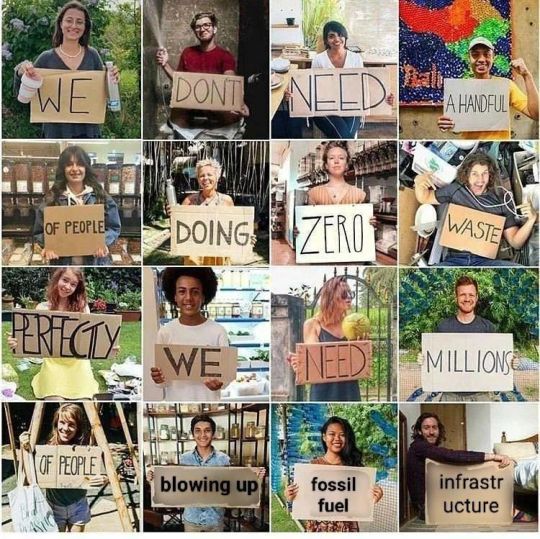
#fossil fuels#infrastructure#global warming#environmentalism#memes#meme#antifascist#co2 emissions#co2#methane#carbon dioxide#jerkmillionaires#jerkbillionaires#jerktrillionaires#eat the rich#eat the fucking rich#ausgov#politas#auspol#tasgov#taspol#australia#neoliberal capitalism#fuck neoliberals#anthony albanese#albanese government#fuck the gop#fuck the police#fuck the supreme court#fuck the patriarchy
7K notes
·
View notes
Text
the scale of AI's ecological footprint
standalone version of my response to the following:
"you need soulless art? [...] why should you get to use all that computing power and electricity to produce some shitty AI art? i don’t actually think you’re entitled to consume those resources." "i think we all deserve nice things. [...] AI art is not a nice thing. it doesn’t meaningfully contribute to us thriving and the cost in terms of energy use [...] is too fucking much. none of us can afford to foot the bill." "go watch some tv show or consume some art that already exists. […] you know what’s more environmentally and economically sustainable […]? museums. galleries. being in nature."
you can run free and open source AI art programs on your personal computer, with no internet connection. this doesn't require much more electricity than running a resource-intensive video game on that same computer. i think it's important to consume less. but if you make these arguments about AI, do you apply them to video games too? do you tell Fortnite players to play board games and go to museums instead?
speaking of museums: if you drive 3 miles total to a museum and back home, you have consumed more energy and created more pollution than generating AI images for 24 hours straight (this comes out to roughly 1400 AI images). "being in nature" also involves at least this much driving, usually. i don't think these are more environmentally-conscious alternatives.
obviously, an AI image model costs energy to train in the first place, but take Stable Diffusion v2 as an example: it took 40,000 to 60,000 kWh to train. let's go with the upper bound. if you assume ~125g of CO2 per kWh, that's ~7.5 tons of CO2. to put this into perspective, a single person driving a single car for 12 months emits 4.6 tons of CO2. meanwhile, for example, the creation of a high-budget movie emits 2840 tons of CO2.
is the carbon cost of a single car being driven for 20 months, or 1/378th of a Marvel movie, worth letting anyone with a mid-end computer, anywhere, run free offline software that consumes a gaming session's worth of electricity to produce hundreds of images? i would say yes. in a heartbeat.
even if you see creating AI images as "less soulful" than consuming Marvel/Fortnite content, it's undeniably "more useful" to humanity as a tool. not to mention this usefulness includes reducing the footprint of creating media. AI is more environment-friendly than human labor on digital creative tasks, since it can get a task done with much less computer usage, doesn't commute to work, and doesn't eat.
and speaking of eating, another comparison: if you made an AI image program generate images non-stop for every second of every day for an entire year, you could offset your carbon footprint by… eating 30% less beef and lamb. not pork. not even meat in general. just beef and lamb.
the tech industry is guilty of plenty of horrendous stuff. but when it comes to the individual impact of AI, saying "i don’t actually think you’re entitled to consume those resources. do you need this? is this making you thrive?" to an individual running an AI program for 45 minutes a day per month is equivalent to questioning whether that person is entitled to a single 3 mile car drive once per month or a single meatball's worth of beef once per month. because all of these have the same CO2 footprint.
so yeah. i agree, i think we should drive less, eat less beef, stream less video, consume less. but i don't think we should tell people "stop using AI programs, just watch a TV show, go to a museum, go hiking, etc", for the same reason i wouldn't tell someone "stop playing video games and play board games instead". i don't think this is a productive angle.
(sources and number-crunching under the cut.)
good general resource: GiovanH's article "Is AI eating all the energy?", which highlights the negligible costs of running an AI program, the moderate costs of creating an AI model, and the actual indefensible energy waste coming from specific companies deploying AI irresponsibly.
CO2 emissions from running AI art programs: a) one AI image takes 3 Wh of electricity. b) one AI image takes 1mn in, for example, Midjourney. c) so if you create 1 AI image per minute for 24 hours straight, or for 45 minutes per day for a month, you've consumed 4.3 kWh. d) using the UK electric grid through 2024 as an example, the production of 1 kWh releases 124g of CO2. therefore the production of 4.3 kWh releases 533g (~0.5 kg) of CO2.
CO2 emissions from driving your car: cars in the EU emit 106.4g of CO2 per km. that's 171.19g for 1 mile, or 513g (~0.5 kg) for 3 miles.
costs of training the Stable Diffusion v2 model: quoting GiovanH's article linked in 1. "Generative models go through the same process of training. The Stable Diffusion v2 model was trained on A100 PCIe 40 GB cards running for a combined 200,000 hours, which is a specialized AI GPU that can pull a maximum of 300 W. 300 W for 200,000 hours gives a total energy consumption of 60,000 kWh. This is a high bound that assumes full usage of every chip for the entire period; SD2’s own carbon emission report indicates it likely used significantly less power than this, and other research has shown it can be done for less." at 124g of CO2 per kWh, this comes out to 7440 kg.
CO2 emissions from red meat: a) carbon footprint of eating plenty of red meat, some red meat, only white meat, no meat, and no animal products the difference between a beef/lamb diet and a no-beef-or-lamb diet comes down to 600 kg of CO2 per year. b) Americans consume 42g of beef per day. this doesn't really account for lamb (egads! my math is ruined!) but that's about 1.2 kg per month or 15 kg per year. that single piece of 42g has a 1.65kg CO2 footprint. so our 3 mile drive/4.3 kWh of AI usage have the same carbon footprint as a 12g piece of beef. roughly the size of a meatball [citation needed].
266 notes
·
View notes
Text
Dandelion News - December 1-7
Like these weekly compilations? Tip me at $kaybarr1735 or check out my Dandelion Doodles for 50% off this month!
1. These high-tech windows fight climate change – and will save you money

“[“Vacuum-insulated glass”] insulates five times better than double-paned glass. The Enthermal product line holds energy about as well as fiberglass wall insulation[…. T]he energy bill savings offset the upfront cost of the upgrade in two to seven years, depending on the building[….]”
2. Doulas test ways to curb Memphis’ Black maternal, infant deaths

“Research shows they are key to better health outcomes. […] Free of charge, [parents enrolled in this pilot program], in addition to being paired with a doula, get access to free yoga classes, diapers, breastfeeding starter kits, nutritious food and other tangible help that can measurably boost well-being.”
3. Scientists find feeding grazing cattle seaweed cuts methane emissions by almost 40%

“This is the first study to test seaweed on grazing beef cattle in the world. […] Most research to reduce methane emissions using feed additives has taken place in controlled environments with daily supplements. But Kebreab noted in the study that fewer than half of those methods are effective for grazing cattle.”
4. Success for local residents as Florida council toppled over sewage plant plan

“A citizens’ revolt in a small Florida city ousted an entire slate of councilors who were pushing for a new sewage plant to be built close to one of the state’s most pristine and treasured rivers.”
5. Beaver survey aims to show the urban benefits of Chicago's 'ecosystem engineers'
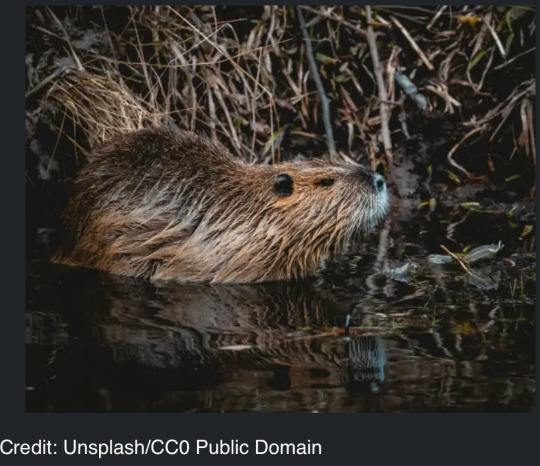
“Urban Rivers is installing [“artificial floating gardens”] along the river to restore native wetland habitats, which provide food and shelter for wildlife, as well as natural spaces for humans.”
6. The future of plastic: Biodegradable, durable, and even edible
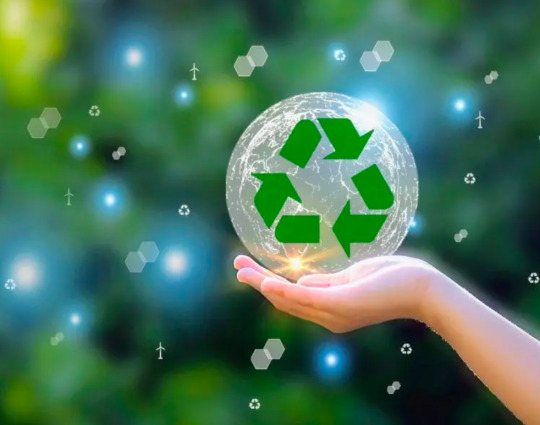
“[… T]he composite plastic proved not only sturdy but also more malleable than its core component, hydroxyethyl cellulose. Additionally, since both cellulose and tyrosine are edible, the biodegradable composite plastic can technically be consumed.”
7. Limestone quarries could be vital for wild bee conservation

“Quarries provide valuable habitats for wild bees and other animals and plants that occur on the now rare calcareous grasslands," explains lead author Dr. Felix Kirsch[….]”
8. New England wedding vendors offer help to same-sex couples before Trump inauguration

“Marriage equality isn’t immediately at risk. Trump has said he considers it settled law, but of course it’s hard to take him at his word […] so vendors in the region are offering free or discounted services to queer couples and noncitizens in a rush to marry.”
9. The indigenous women saving India's endangered giant yams
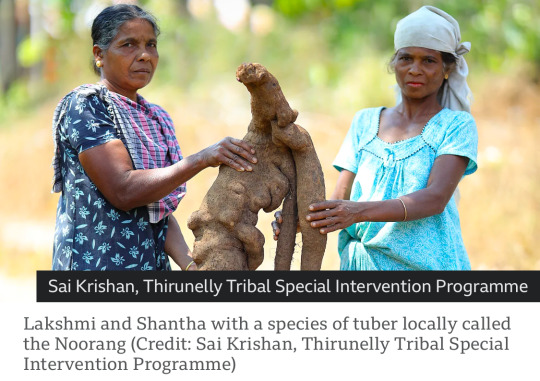
“Since their formation in 2022, the 10 members of the Noorang group have planted and brought back to the community 180 varieties of wild tubers[….] The project is part of [… a] farming initiative to eradicate poverty, provide agricultural training and empower women in vulnerable tribal communities.”
10. The US is making and deploying more solar panels than ever before

“[… D]omestic solar module manufacturing capacity has nearly quintupled since 2022[….] Solar is the cheapest source of new power generation by far, and it’s an increasingly large employer in the U.S., particularly in Republican-led states.”
November 22-28 news here | (all credit for images and written material can be found at the source linked; I don’t claim credit for anything but curating.)
#hopepunk#good news#solar panels#solar energy#solar power#climate change#co2 emissions#cattle#seaweed#india#yams#food insecurity#beaver#habitat#conservation#bees#florida#civic engagement#new england#same sex marriage#gay marriage#marriage#us politics#plastic#science#home improvement#thermal insulation#parenting#perinatal#medicine
65 notes
·
View notes
Photo

Three countries are responsible for 52% of global CO2 emissions
168 notes
·
View notes
Text
youtube
Why are we making Mamiwata? Watch this video. Win Prizes Join the tribe Pick your side Preservation or annihilation? BECAUSE CLIMATE CHANGE IS REAL!
#climate change#anti slavery#cobalt mining#child labor#movie#contest#prizes#african#human rights#mining#Electric vehicles#Social justice#Cobalt mining#Child labor#Slave labor#Global warming#Climate change#CO2 emission#Greenhouse gas emission#Africa exploitation#Panafricanism#African diaspora#Youtube
1 note
·
View note
Text
From Sun to Savings: Comparative Analysis of Rooftop Solar Market in Germany vs. India
From Sun to Savings for Germany and India. #SolarEnergy #Solarmarket #RenewableEnergy #EnergyMarket
Let’s compare the two countries’ Growth analysis in the case of the Rooftop solar market. Rooftop Solar Market Market Overview for Germany: The market size in the case of the German rooftop solar panel installed, is estimated to be 15.60 gigawatts (GW) in 2023. Market Overview for India: The market size for the Indian rooftop solar market in 2023 is estimated to be 14.50 GW by the end of…

View On WordPress
0 notes
Text












"Block-Wall"Residence, Karuizawa, Nagano, Japan,
Japanese architecture practice nendo designed a private residence with block-walls made of "CO2-SUICOM", an eco-friendly carbon removal concrete.
The block-walls adjust the line of sight, a creative solution essential in securing privacy from passing traffic and pedestrians while acting as a foil for basking in the natural surroundings.
The design concept was to build the house with concrete block walls that would serve as filter screens. Besides, the material used deserves special attention: “CO2-SUICOM※” blocks, made by replacing a portion of cement, with an industrial byproduct and adding a carbon dioxide-absorbing material for less CO2 emissions during production.
Approximately 2,050 blocks are staggered in parallel rows to create five 3m-high walls. The living space is designed to “fill in the gaps” in between. Calibrating the block angles by three degrees to fit each room condition ensures privacy in the bedroom and bathroom, while also providing a spacious ambiance in the living and dining rooms. Ultimately, the design transpires into blocks arranged in a gradient-like pattern.
Courtesy: Nendo,
Photograph by Takumi Ota
#art#design#architecture#minimalism#interiors#luxury house#luxury home#eco-friendly#block wall#nendo#japan#CO2-suicom#byproduct#co2 emissions#nagano#retreat#karuizawa
168 notes
·
View notes
Text
"[insert om character] would be a swiftie" "going to a tswift concert with [character] hcs" i should be allowed to hunt you down for sport
#this is /lighthearted but i am so so sick of tswift#i'm lucky enough to not be exposed to miss co2 emissions on a regular basis#but occasionally it crops up in the om fandom and as a queer poc let me say#you can do so much better#in terms of 'queer icons' (which she fucking isn't to begin with) or even just musicians#obey me
156 notes
·
View notes